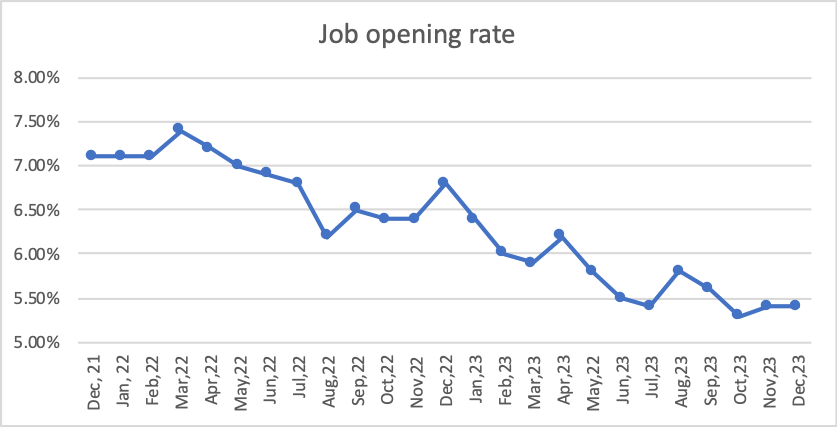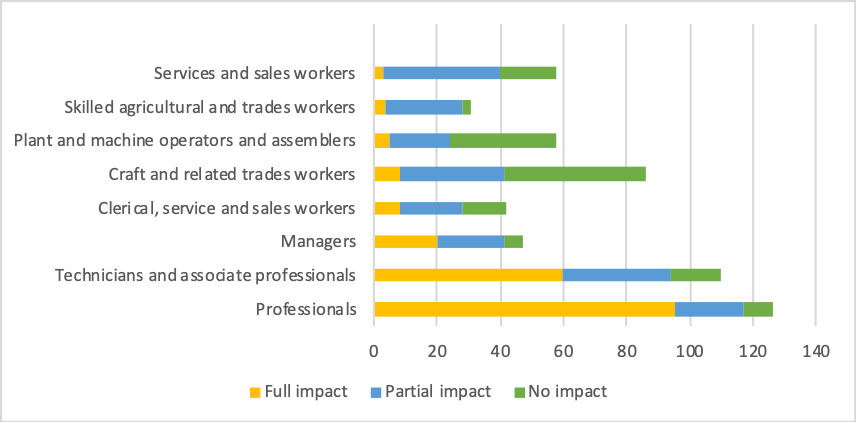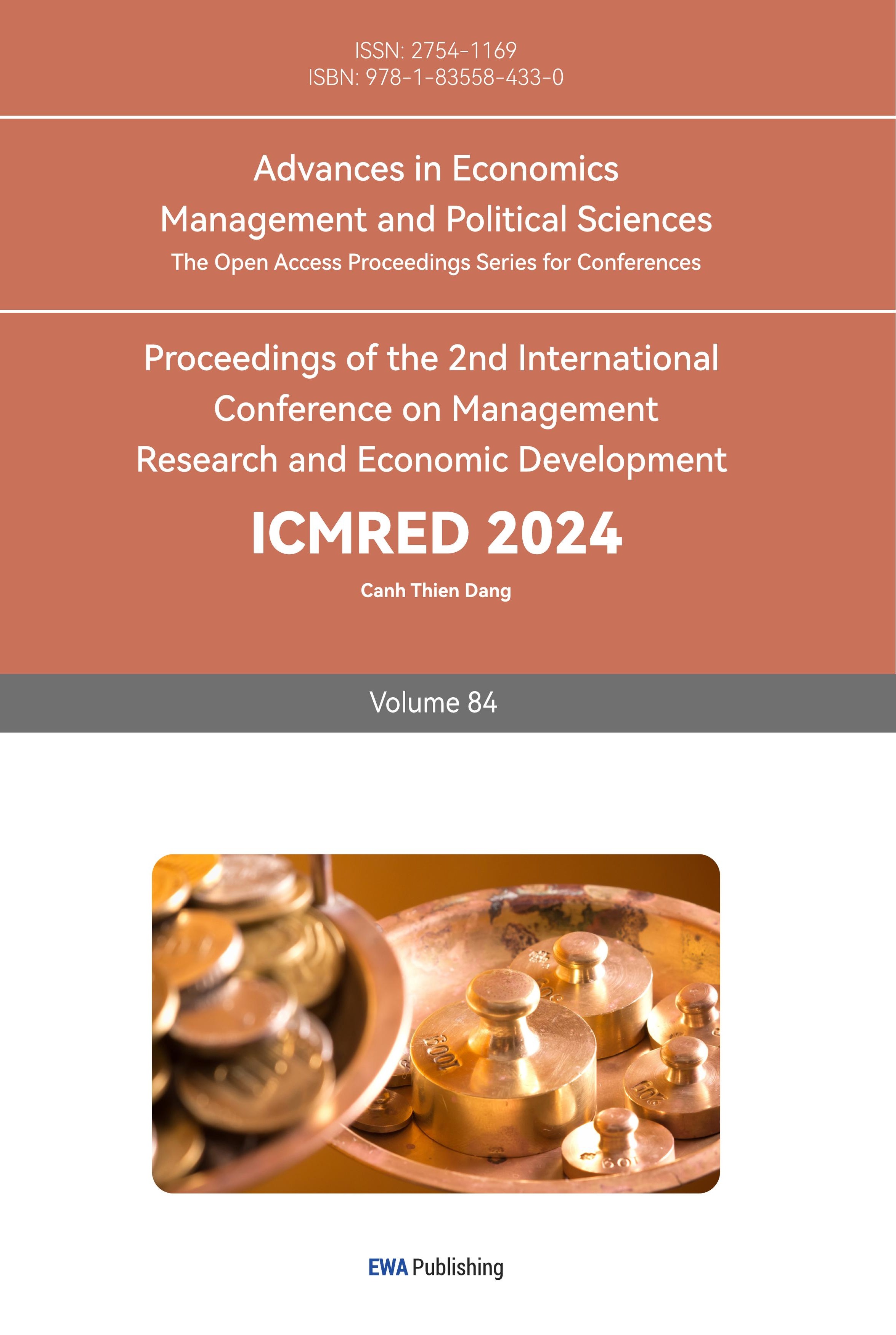1. Introduction
Artificial Intelligence (AI), with an affection for current trends in this modern world, has major implications for the labor market [1]. In recent years, AI and robotics are expected to be more spectacular that can change the global work system. AI development leads to high anxiety surrounding automation and other technological trends, highlighting the apprehension about their effects [2]. For example, people use AI technology such as ChatGPT, Craiyon, and Meta AI to do lots of work that replaces human labor. AI makes some workers more productive; the technology can replace jobs done by others and it could potentially transform almost all professions at least to some degree [3]. In addition, the impact of AI is not only on employment but also on students who are currently studying in high school. Students are confused about their future, their choice of major, and their life.
The development of AI improved different conveniences these days, AI can do various tasks like basic programming, analyzing, machine learning, etc. The abilities of AI surpassed people’s expectations and even replaced many jobs unexpectedly. Global managers are now less hiring human employees because AI technologies exist that can save time and money. Open AI, the most renowned AI company that created ChatGPT, is leading the world into a new generation of AI. This paper examines the relationship between AI and the labor market, highlighting the decline in opportunities faced by workers and emphasizing the importance of developing creative skills and utilizing AI rather than against it. Furthermore, this paper provides students with suggestions and recommendations for selecting their future job prospects or majors, taking into consideration the current work situation they might confront.
2. Relationship Between AI and Labor Market
The relationship between artificial intelligence and the labor market has been unbalanced in recent years, AI technologies have grown, and improved way faster than people thought before. Their relationship includes job displacement, job quality, and income inequality. Improvement in robotics and artificial intelligence leads to the decline of opportunities for jobs and the number of people unemployed. These technologies’ growth affects huge economic and labor employment leading people to feel anxious [3].
The rapid advancement of technology and innovation poses an employment risk. This kind of issue is not new and has been a concern since 1930 when the economist, John Maynard Keynes, first proposed his theory of technological unemployment – the idea that technological progress can lead to job losses [1]. Insights from the past, over the last 200 years, the manufacturing industry has undergone various shifts. It started from artisanal and towards mechanized and non-mechanized factory production. This evolution further progressed from simple factory setups to the implementation of assembly lines and ultimately from assembly lines to the adoption of continuous and batch processing methods [4]. This is a huge affection on unemployment in history, the number of low-education people lost their jobs because of the machine replacement.
Draw the parallels with historical events during the Industrial Revolution, where the advent of machinery sparked fears of widespread unemployment as humans were replaced by automation. However, history has shown that contrary to these fears, technological advancements not only failed to cause mass joblessness but also propelled faster economic development. Building on this historical perspective, it can be seen that AI, as the latest technological frontier, similarly revolutionizes industries globally. The rapid development of artificial intelligence brings uncertainty about its economic impact, especially in terms of productivity. Accurately assessing its true impact remains challenging because of the lack of comprehensive data [5].
2.1. Development of AI
The development of artificial intelligence (AI) can be traced back to Alan Turing’s 1950 article in Mind, in which he suggested a test to assess whether machines could exhibit the same level of intelligence as humans. He put forward that a computer could be deemed to possess artificial intelligence if it is capable of emulating human response within defined parameters. He showed that processes could be executed rapidly enough for the digital computer to imitate the behavior of any discrete-state machine effectively [6]. Since then, AI has become increasingly sophisticated, with the emergence of technologies.
AI has gone through three waves. First wave, people are worried about far-off stuff like robots taking over. Second wave, they focused on real problems like how AI learns and whether it is biased. Now, it is almost time for the third wave, which is all about facing up to the fact that AI can harm the environment [7]. People concerned AI will harm the environment include issues like resource depletion such as work displacement, and data centers which consume large amounts of energy for cooling and maintenance, resulting in carbon emissions and environmental stress.
For instance, ChatGPT, which was launched on November 30, 2022, quickly gained 100 million monthly active users due to its thorough responses and accurate answers to user inquiries [8]. As AI continues to grow and improve at an unprecedented pace, it is becoming increasingly adept such as basic programming and analysis, making some tasks no longer suitable for humans due to the relatively high efficiency of AI. There is no doubt that AI is still improving and will continue to change the world [7]. People in this world have to think about how to survive with the AI technology.
2.2. Impact on Labor Market
Global managers are increasingly opting for AI technology over hiring employees given the significant influence of artificial intelligence on the job market. As an illustration, data from the AI Index indicates that error rates in image recognition plummeted from 29% to under 3% from 2010 to 2017, surpassing the performance levels of humans [9]. The impact on the labor market is a crucial concern in today’s economy. With the ever-increasing pace of technological advancements, there is a growing fear that automation and artificial intelligence replace human jobs, leading to unemployment and social unrest. However, some experts argue that these technologies could also create new job opportunities and enhance productivity, resulting in a more efficient and prosperous economy.
The problem is essential to address the potential negative impact on workers and ensure that policies are in place to support those who may be displaced by automation. Figure 1 shows monthly job opening rate dropped from 7% to 5.4% between December 2021 to December 2023. It is an example of AI technology’s impact on the labor market in recent years.

Figure 1: Monthly job openings rate in the United States from December 2021 to December 2023 (Source of data: statista.com).
As technology continues to advance, there is growing concern about its impact on displacement. Figure 2 the data indicates that within the “Professionals” category, approximately 95 occupations are projected to experience the full impact of ChatGPT. Moreover, the integration of technology in specific sectors may exacerbate inequality and job displacement, as it often privileges individuals with advanced levels of education and expertise.
The impact of technology leads to an amount of demand for highly skilled roles necessitating non-routine cognitive abilities, as well as low-paid positions requiring non-routine manual skills [1]. This creates a polarization in the labor market and leads to a growing gap between high-skilled and low-skilled jobs. In this statement, there is a growing number of service jobs that do not require high levels of education, such as those in retail, that are considered non-standard and challenging to automate. It is worth noting that there has been an increase in the number of job opportunities that require a higher level of education, including positions in management, engineering, and healthcare [1].

Figure 2: Different levels of Impact for Major Categories in the International Standard Classification of Occupations (ISCO) [8].
2.3. Impact on Student Prospect
The impact of AI on students is truly dynamic and multifaceted. With the increasing integration of AI technology into the education system, students are exposed to a range of new learning opportunities and resources that were previously unavailable. Students can learn without going to school or finding teachers. They can use AI-powered tools such as chatbots, virtual assistants, and intelligent tutors to engage with course materials and receive personalized feedback. While AI technology is changing the landscape of education, the role of teachers is still important and needed, especially for professions like piano teachers and golf teachers, where in-person instruction is essential. However, demand for teachers would decrease due to AI technology.
AI technology has had a significant impact not only on the job market for teachers but has also made students feel overwhelmed about their future. In the past, most students chose their majors based on the job they wanted to do. However, due to AI students are now hesitant to select majors such as accounting and analysis, as they know these roles can be easily replaced by AI. Instead, students are now opting for majors related to computers, information technology, cyber security, and digitalization, as they believe that these fields offer better job security. Unfortunately, students who are interested in creative fields like art, photography, and music creation may not consider these as their main majors due to high replacement by AI technology like Craiyon, and Meta AI. This has led to a feeling of depression among students who worry about their prospects. They thought about it and often asked themselves what they can do if AI were to replace most human labor. The job opportunities for people are decreasing, and the chances for students are also decreasing. It will be a huge difficulty for them in this modern world.
3. Discussion and Suggestion
The increased use of AI technology is becoming a major trend in the modern world. It does offer many benefits to people but also affects a lot on labor market. One of the biggest issues in the labor market is human employees cannot easily find a job due to the prevalence of AI technology. To address this, governments should implement policies that ensure AI technology is not abused, protect the unemployed, and provide job opportunities for people.
As AI technology continues to advance at a rapid pace, it is crucial that proper regulations and oversight are put in place to ensure its sustainable growth. Without such measures, there is a risk of inadequate transparency, safety, and ethical standards, which could compromise the benefits of AI technology on society [10]. It is important to remain calm and understand that technology should be used to create more opportunities rather than control people. Instead of opposing AI, humans should embrace and use them such as convenience. Similar to other revolutions in history, the initial impact of change can be significant, but once people adapt, the economy usually improves.
For students, schools and the education system need to assist students in making informed decisions about their career paths. Analyzing future trends can be a risky endeavor, but with guidance and support, students can gain a better understanding of their interests and strengths. The problem is t can be challenging for a high-school student who is only 16 years old to make such important decisions about their future. Students need to know what they want to do in the future, they should identify themselves first, and know who they are. Therefore, schools should focus on helping students identify their individual qualities and provide them with the necessary resources to make informed decisions about their future. This includes not only offering courses but also providing guidance and support to help students discover who they are and what they want to achieve in life.
4. Conclusion
AI has become one of the most useful tools these days, and technologies such as ChatGPT are transforming the way people live and work. The rise of AI and automation also has significant implications for the labor market, creating challenges for workers and students alike. While AI technology has led to increased efficiency, it has also resulted in decreasing job opportunities for workers. The rapid growth of AI also makes people feel overwhelmed, not ready, and cannot adapt. In this context, it is essential to emphasize the importance of developing creative skills that can be utilized alongside AI rather than competing against it. By cultivating these skills and learning to work collaboratively with AI, workers, and students can thrive in the changing job market and capitalize on the opportunities presented by AI technologies.
After analyzing the existing research on students’ majors and prospects, it is evident that there is a lack of in-depth analysis and data. This has led to a limited understanding of the subject matter and has made it challenging for people to make informed decisions. However, it is essential to note that the future holds immense potential for more comprehensive research in this area. By conducting in-depth research and collecting more data, people will have a better understanding of the various aspects of students’ majors and prospects. This will enable individuals to make informed decisions and pave the path for a better future.
References
[1]. Petropoulos, G. (2018). The impact of artificial intelligence on employment. Praise for Work in the Digital Age, 119, 121.
[2]. Acemoglu, D. and Restrepo, P. (2018). Artificial intelligence, automation, and work. In The economics of artificial intelligence: An agenda University of Chicago Press. (pp. 197-236).
[3]. Frank, M. R., Autor, D., Bessen, J. E., Brynjolfsson, E., Cebrian, M., Deming, D. J. and Rahwan, I. (2019). Toward understanding the impact of artificial intelligence on labor. Proceedings of the National Academy of Sciences, 116(14), 6531-6539.
[4]. Goldin, C. and Katz, L. F. (1996). Technology, skill, and the wage structure: insights from the past. The American Economic Review, 86(2), 252-257.
[5]. Damioli, G., Van Roy, V, and Vertesy, D. (2021). The impact of artificial intelligence on labor productivity. Eurasian Business Review, 11, 1-25.
[6]. Cooper, S. B. and Van Leeuwen, J. (2013). Alan Turing: His work and impact. Elsevier.
[7]. Schank, R. C. (1991). Where's the AI? AI magazine, 12(4), 38-38.
[8]. Zarifhonarvar, A. (2023). Economics of chatgpt: A labor market view on the occupational impact of artificial intelligence. Available at SSRN 4350925.
[9]. Furman, J. and Seamans, R. (2019). AI and the Economy. Innovation policy and the economy, 19(1), 161-191.
[10]. Vinuesa, R., Azizpour, H., Leite, I., Balaam, M., Dignum, V., Domisch, S., and Fuso Nerini, F. (2020). The role of artificial intelligence in achieving the Sustainable Development Goals. Nature Communications, 11(1), 1-10.
Cite this article
Kao,W. (2024). Impaction of Artificial Intelligence on the Labor Market . Advances in Economics, Management and Political Sciences,84,24-29.
Data availability
The datasets used and/or analyzed during the current study will be available from the authors upon reasonable request.
Disclaimer/Publisher's Note
The statements, opinions and data contained in all publications are solely those of the individual author(s) and contributor(s) and not of EWA Publishing and/or the editor(s). EWA Publishing and/or the editor(s) disclaim responsibility for any injury to people or property resulting from any ideas, methods, instructions or products referred to in the content.
About volume
Volume title: Proceedings of the 2nd International Conference on Management Research and Economic Development
© 2024 by the author(s). Licensee EWA Publishing, Oxford, UK. This article is an open access article distributed under the terms and
conditions of the Creative Commons Attribution (CC BY) license. Authors who
publish this series agree to the following terms:
1. Authors retain copyright and grant the series right of first publication with the work simultaneously licensed under a Creative Commons
Attribution License that allows others to share the work with an acknowledgment of the work's authorship and initial publication in this
series.
2. Authors are able to enter into separate, additional contractual arrangements for the non-exclusive distribution of the series's published
version of the work (e.g., post it to an institutional repository or publish it in a book), with an acknowledgment of its initial
publication in this series.
3. Authors are permitted and encouraged to post their work online (e.g., in institutional repositories or on their website) prior to and
during the submission process, as it can lead to productive exchanges, as well as earlier and greater citation of published work (See
Open access policy for details).
References
[1]. Petropoulos, G. (2018). The impact of artificial intelligence on employment. Praise for Work in the Digital Age, 119, 121.
[2]. Acemoglu, D. and Restrepo, P. (2018). Artificial intelligence, automation, and work. In The economics of artificial intelligence: An agenda University of Chicago Press. (pp. 197-236).
[3]. Frank, M. R., Autor, D., Bessen, J. E., Brynjolfsson, E., Cebrian, M., Deming, D. J. and Rahwan, I. (2019). Toward understanding the impact of artificial intelligence on labor. Proceedings of the National Academy of Sciences, 116(14), 6531-6539.
[4]. Goldin, C. and Katz, L. F. (1996). Technology, skill, and the wage structure: insights from the past. The American Economic Review, 86(2), 252-257.
[5]. Damioli, G., Van Roy, V, and Vertesy, D. (2021). The impact of artificial intelligence on labor productivity. Eurasian Business Review, 11, 1-25.
[6]. Cooper, S. B. and Van Leeuwen, J. (2013). Alan Turing: His work and impact. Elsevier.
[7]. Schank, R. C. (1991). Where's the AI? AI magazine, 12(4), 38-38.
[8]. Zarifhonarvar, A. (2023). Economics of chatgpt: A labor market view on the occupational impact of artificial intelligence. Available at SSRN 4350925.
[9]. Furman, J. and Seamans, R. (2019). AI and the Economy. Innovation policy and the economy, 19(1), 161-191.
[10]. Vinuesa, R., Azizpour, H., Leite, I., Balaam, M., Dignum, V., Domisch, S., and Fuso Nerini, F. (2020). The role of artificial intelligence in achieving the Sustainable Development Goals. Nature Communications, 11(1), 1-10.









